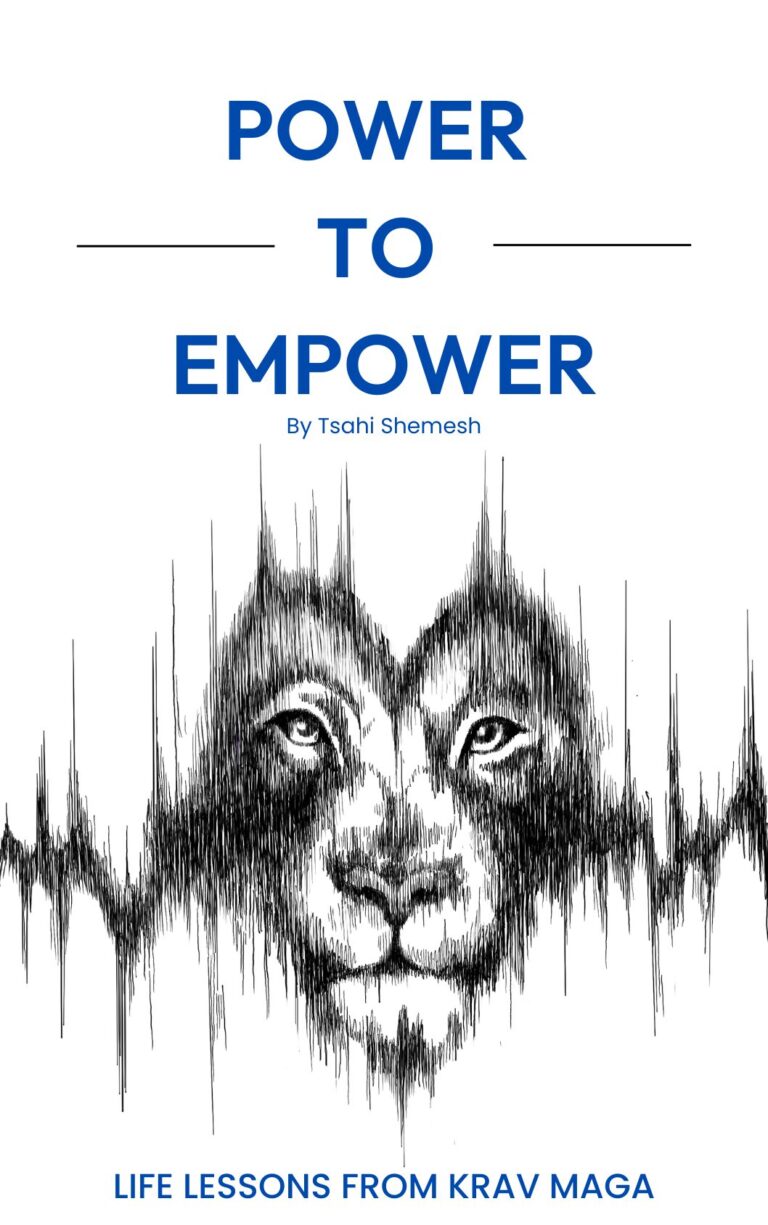The Iceberg Principle in Self-Defense: Seeing More Than What’s Visible
We only ever see the tip of the iceberg. The visible part of a person or a situation is easy to notice, but it rarely tells the full story. What matters most—the weight, the depth, the history—remains hidden below the surface.
When we meet people, we see their words, posture, and expressions. What we don’t see are the fears, the scars, or the values that shaped them. Too often, we mistake the surface for the whole and jump to conclusions. That mistake is costly. In life, it creates broken trust and poor choices. In self-defense, it can get you hurt.
A fight doesn’t start with the punch. It starts long before. The attacker positions himself. He closes the distance. He tests your awareness. The strike is the end of a chain, not the beginning. If you only notice the impact, you are already late. Life works the same way. A marriage doesn’t collapse overnight. A friend doesn’t explode from nowhere. A stranger doesn’t suddenly snap on the subway. What looks sudden is usually just the tip of a long buildup that was always there, unseen by you.
I see this daily on the mat. A student throws a weak punch and gets frustrated, convinced they are failing. What I see is not only bad mechanics. I see exhaustion from working two jobs. I see years of being told to stay quiet. I see hesitation to take up space, and fear of being judged. The bad punch is only the surface. The iceberg is what holds them back. Months later, when the same student finally strikes with power, it is not just the technique that has improved. It is the breakthrough of everything underneath.
This does not mean every action can be excused by what lies beneath. A violent attack is still a violent attack, no matter the backstory. A betrayal is still a betrayal. Understanding the depth explains behavior, but it does not erase responsibility. The point is not to excuse but to see clearly.
The second danger is assuming people share your values. That assumption blinds you. I saw this just yesterday on the way to the 96th Street subway station. Two men were standing face to face. One of them was clearly looking for trouble, aggressive, harassing. The other man was smiling, standing too close, and trying to reason with him. You could see on his face he believed logic and kindness would calm the situation. But he was wrong. His smile and his rational words only fueled the aggressor’s anger. He didn’t realize that the other man was not interested in reason. He wasn’t operating on the same values. His logical brain couldn’t comprehend that violence was seconds away.
That moment showed why so many people misread danger. They project their own intentions onto others. They think, “If I am calm, he will calm down too.” Or, “If I smile, he will see I mean no harm.” But the other person might be driven by rage, fear, or ego. Your logic only makes them feel disrespected or challenged. In the subway incident, the nice man was oblivious to the fact that he was standing inside the danger zone. He thought he was diffusing. In reality, he was escalating without realizing it.
This is why shallow vision is dangerous. If you only see the smile, you miss the rising aggression. If you only see the words, you miss the intent. If you only see similarity, you miss the difference in values. Self-defense requires you to read deeper. You don’t need to know every detail of someone’s past, but you do need to recognize that what you see and what you assume are rarely the whole truth.
The same principle applies to yourself. Most people don’t know their depth until life forces them to discover it. You think you know your limits, but under pressure you find hesitation you didn’t expect – or strength you didn’t believe you had. Training under stress reveals what is hidden. Better to meet those parts of yourself in practice than for the first time when it matters most.
I have misjudged people before. I have underestimated threats by trusting what was visible. And I have been misjudged by people who thought they understood me at a glance, without seeing the years of training, the scars, and the lessons that live underneath. Every one of those mistakes is a reminder. The tip is never the whole story.
Most of communication is non-verbal. Tone, timing, posture, and presence matter more than words. In Krav Maga, this is survival. The body shows intent long before the strike. If you learn to look, the iceberg reveals itself.
This awareness changes more than how you fight. It changes how you live. When your partner snaps, don’t only hear the words. Notice the stress behind them. When a colleague explodes, don’t only see the anger. Recognize the buildup underneath. That does not excuse bad behavior. But it does let you respond with clarity instead of ignorance.
The world teaches us to judge quickly. Swipe left or right. Strong or weak. Safe or unsafe. But the iceberg is always larger than it looks. People, events, and even yourself are more than the tip. If you confuse the surface with the truth, you will be surprised again and again. If you train yourself to see deeper and if you stop assuming others live by your values, you move with clarity, with strength, and with control.
Do something amazing,
Tsahi Shemesh
Founder & CEO
Krav Maga Experts
Relevant Articles:
Is It a Plateau? Or Are The Metrics Wrong?
Perfect companion to the iceberg theme. It reframes progress as more than visible power or new techniques and puts the spotlight on invisible gains like stress tolerance, timing, and awareness that students usually miss.
Why Women’s Perception of Self‑Defense Is Usually Wrong
Sharp take on situational awareness that includes how your own body broadcasts your state. It reminds readers that they are part of the situation and that presence management is often the hidden half of safety.
The Key for De‑Escalation
Argues that de‑escalation is built on capability and clarity. It exposes the gap between scripted empathy and the real physics of violence, teaching readers to read the whole picture before they act.
Recovering From Trauma With Krav Maga / Self‑Defense Training
A lived story that shows how triggers reveal the work that needs to be done. It takes readers beneath reactions into the process of rebuilding capacity through training.
How To Be a Good Partner in Krav Maga
Trust on the mat is not cosmetic. This article breaks down the mindset and behaviors that let two strangers train hard without harm, which is the practical side of seeing beyond first impressions.
Why Physical Training Should Be Part of Every Child’s Education
Uses research and gym reality to argue that contact, feedback, and pressure reveal and reshape what is hidden in kids. Strong tie to learning what is below the surface and building it the right way.
We Are Raising Fragile Minds in a Dangerous World
Macro view on why bodies need stress and skill to support minds. It connects history, responsibility, and physical practice so readers understand the deeper forces shaping behavior and resilience.


Great post as always. During my clinical rotation at a psychiatric ward, ive seen normal looking people. On the surface they look like just like us. Aside of course from the hospital gowns or clothes they are required to wear, they behave almost normal.. until you hear them speak (if you allow them that is) and later on behave. I do know that there are people who try to calm these kind of patients down but without knowledge of their background or the training to do so, they almost always fail. The problem with people who have the best intentions and only want to see the good in everyone is they have put blinders on. It’s ok to be kind, it’s great to be actually, but you also have to be wise and sadly to some that will have to come in the form of some rude awakening. One of the patients i had was someone triggered by the color pink. I found out because he apparently attacked an orderly who wore pink socks at one occasion. I never wore pink at the hospital and never had in years because of that experience. But my point is, before going to see ay patient, i also read their charts before speaking to them. In a controlled setting such as the one i was in i at least had the privilege to know the histories of patients. Plus wading in the waters knowing one could be a shark equipped me with the preparation and awareness to know anything can go sideways. In the real world ideally thats how we should be. But we dont have access to people’s “charts” .thats how social cues come into play. Observe, listen then react. Some people do say im paranoid but this came from years of exposure to patients and also reading a lot of true Crime stories. What is perceived as paranoid by some may just be the willingness in my part to understand others more and be realistic im my expectations that we all seem normal but we arent. When close friends tease me that im too paranoid i always respond in jest that id rather be paranoid than dead lol. But there is some truth to that though. I am genuinely nice to almost everyone i meet but i also am cautious and i pay attention to my surroundings. I know this world can be beautiful with many kind and wonderful people but there are also mentally unstable ones and worse monsters who cant be rehabilitated. we cant live with the illusion of safety, if we do, we will suffer the consequences. It’s better to be prepared always before danger happens than to be forced to be prepared once its already in front of you. Yes lets be kind, but lets also be smart, safe and trained to protect ourselves when the need arises.
Thank you for sharing, Marie